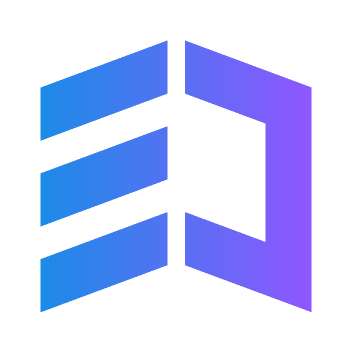Description

Pathwright

Mindflash
Comprehensive Overview: Pathwright vs Mindflash
Pathwright and Mindflash are both online learning platforms, but they cater to different needs and markets. Here's an overview of each, along with a comparison of their market positions and key differentiators:
Pathwright
a) Primary Functions and Target Markets:
- Primary Functions: Pathwright is a learning management system (LMS) designed to simplify course creation and delivery. It provides a comprehensive platform for designing, organizing, and delivering courses with a strong focus on user experience. Features include course creation, learner management, custom branding, and analytics to monitor progress and engagement.
- Target Markets: Pathwright is often used by educators, institutions, and companies that prioritize a visually appealing and seamless learning experience. It’s suitable for both academic settings and professional training environments.
b) Market Share and User Base:
- Pathwright appeals particularly to a niche market of educators and organizations that value design and user interface. The overall market share might be smaller compared to larger, more established LMS players, but it has a dedicated user base that seeks simplicity and elegance in course delivery.
c) Key Differentiating Factors:
- Design and User Experience: Pathwright distinguishes itself with an emphasis on a well-designed, intuitive user interface that ensures ease of use for both course creators and learners.
- Flexibility: Allows for a high degree of customization, tailoring courses to specific instructional designs and learner needs.
- Community Focus: It supports building a community of learners with features that encourage interaction and collaboration.
Mindflash
a) Primary Functions and Target Markets:
- Primary Functions: Mindflash is a cloud-based LMS geared towards training employees, customers, and partners. Its key functionalities include course management, reporting, analytics, and integration with other business systems.
- Target Markets: Mindflash is aimed primarily at businesses that need to train a distributed workforce or customer base efficiently. It is widely used in industries like healthcare, technology, finance, and retail.
b) Market Share and User Base:
- Mindflash has a sizable presence in the corporate training sector, with a user base consisting largely of enterprises and companies seeking scalable training solutions. Its market share is more prominent within industries requiring compliance and regulatory training.
c) Key Differentiating Factors:
- Enterprise Focus: Mindflash is tailored to meet the needs of larger organizations with features that support bulk user management, SCORM compliance, and extensive reporting capabilities.
- Integration Capabilities: Offers robust integration with other enterprise software systems such as Salesforce, which is ideal for aligning training with broader business processes.
- Scalability and Security: Designed to handle large volumes of learners while ensuring data security and compliance with industry standards.
Comparison
- Market Position: While both platforms serve the online education market, Pathwright is more aligned with educators and smaller businesses focused on course design and delivery, whereas Mindflash caters specifically to the corporate training market.
- User Experience vs. Integration: Pathwright shines with its user-friendly design and community-building tools, making it ideal for engaging learning experiences. In contrast, Mindflash focuses on providing enterprise-level integration and scalability, crucial for companies with complex training needs.
- Customization vs. Standardization: Pathwright offers more customization for course creators who want flexibility in design, while Mindflash provides a standardized approach with powerful tools for training management and analytics.
Both platforms have carved out unique niches within the e-learning space, supporting different types of learning environments and organizational goals.
Contact Info

Year founded :
2012
+1 864-990-2065
Not Available
United States
http://www.linkedin.com/company/pathwright

Year founded :
Not Available
Not Available
Not Available
Not Available
Not Available
Feature Similarity Breakdown: Pathwright, Mindflash
When comparing Pathwright and Mindflash, both platforms serve as online learning and training solutions, but they target different segments and have unique approaches to course delivery and management. Here's a breakdown of their similarities and differences:
a) Core Features in Common
-
Course Authoring and Management:
- Both platforms offer robust tools for creating and managing courses. They allow instructors or training professionals to upload content in various formats, organize it into modules or lessons, and structure courses to guide learners effectively.
-
Assessment and Quizzes:
- Pathwright and Mindflash provide tools for creating assessments and quizzes to test learners' understanding and retention of the material. This includes multiple-choice questions, true/false, and other interactive assessment formats.
-
Learner Tracking and Analytics:
- Both platforms offer analytics to track learners' progress through the courses. This includes completion rates, performance metrics, and engagement statistics to give instructors insight into how learners are interacting with the content.
-
Mobile Compatibility:
- Pathwright and Mindflash support mobile learning, allowing learners to access courses and content from their smartphones or tablets, increasing accessibility and convenience.
b) User Interface Comparison
-
Pathwright:
- Known for its clean, modern, and intuitive user interface that emphasizes ease of navigation for both learners and instructors. Pathwright employs a straightforward, visually-oriented design that is user-friendly, focusing heavily on the learner’s journey through the content with a step-by-step progression model.
-
Mindflash:
- Features a more traditional enterprise look, focusing on functionality and detail. It offers a user interface designed to cater to corporate training environments, with a more formal layout optimized for organizations that prioritize detailed reporting and integration within business processes.
c) Unique Features
-
Pathwright:
- Collaborative Learning: Pathwright emphasizes collaborative learning with social features that allow learners to engage with each other, post comments, and discuss content within the platform. This enhances community learning experiences.
- Design Flexibility: Offers a highly customizable design experience where course designers can tailor the aesthetic and format of their courses to fit specific needs, contributing to a more personalized learning experience.
-
Mindflash:
- SCORM and LMS Integration: Mindflash is designed with integration in mind, supporting SCORM and AICC compliance, which makes it suitable for organizations looking to integrate these features into existing Learning Management Systems.
- Enterprise Features: Provides advanced enterprise features like custom branding, single sign-on (SSO), and automated training workflows which make it appealing for large businesses and corporations with specific training requirements.
In summary, both Pathwright and Mindflash offer essential e-learning and training functionalities but serve slightly different needs—the former with a focus on user-friendly design and collaborative features, and the latter with a focus on business integration and enterprise-level management.
Features

Interactive Learning Experience
Customization and Branding
Integration and Support
Course Creation and Management
Analytics and Reporting

Flexible Delivery Options
Engagement and Interaction
User-Friendly Course Creation
Performance Tracking and Reporting
Best Fit Use Cases: Pathwright, Mindflash
When considering the use cases for Pathwright and Mindflash, it’s essential to understand the specific features and strengths each platform offers to address various business needs. Here's a detailed analysis based on your criteria:
a) Pathwright
Best Fit Use Cases:
- Educational Institutions and Online Schools: Pathwright is particularly suited for educational institutions looking to offer structured online curricula. Its interactive design and course management tools allow educators to create engaging and cohesive learning experiences.
- Creative Arts and Skills Training: With its focus on design and interactivity, Pathwright is ideal for organizations that offer courses in creative fields such as design, art, writing, and other craftsmanship skills.
- Corporate Training with a Focus on Engagement: Companies looking for a platform that emphasizes user engagement and an intuitive interface might find Pathwright suitable, especially if they value a visually appealing course design.
Types of Businesses or Projects:
- Startups and Small to Medium Enterprises (SMEs): Pathwright’s user-friendly design makes it attractive for smaller teams or organizations without extensive technical resources to design robust training programs.
- Nonprofits and Community Programs: Organizations with limited budgets can also benefit from Pathwright's offerings, especially when they aim to provide community education or outreach programs.
b) Mindflash
Preferred Scenarios:
- Large Enterprises and Corporate Environments: Mindflash is often preferred by large organizations that need to train a substantial and possibly global workforce. Its robust analytics and reporting tools make it apt for monitoring extensive training programs.
- Compliance Training and Certifications: Companies operating in highly regulated industries, such as healthcare, finance, and manufacturing, may find Mindflash beneficial due to its capabilities in ensuring compliance and tracking certifications.
- Process and Technical Training: Industries that require detailed technical training, such as IT services, automotive, and engineering firms, can leverage Mindflash’s structured course delivery and assessment tools.
Types of Businesses or Projects:
- Fortune 500 Companies: Larger corporations that need scalable solutions for training thousands of employees across various locations.
- Regulated Industries: Organizations in sectors where ongoing compliance training is critical and must be meticulously tracked and reported.
d) Catering to Different Industry Verticals or Company Sizes
-
Pathwright: Tends to cater more towards educational, creative, and community-oriented organizations, regardless of company size, but is particularly beneficial for smaller institutions or businesses looking for an easy-to-deploy solution without needing extensive tech support.
-
Mindflash: Geared towards larger enterprises and industries that demand rigorous compliance and process-oriented training. Its features are designed to support complex organizational structures, making it suitable for large-scale implementations.
In summary, Pathwright is best for entities focused on dynamic and engaging educational content, typically in smaller or more creative industries. Meanwhile, Mindflash excels in environments needing comprehensive compliance training and scalability features, making it the go-to for larger and more regulated business operations.
Pricing

Pricing Not Available

Pricing Not Available
Metrics History
Metrics History
Comparing teamSize across companies
Conclusion & Final Verdict: Pathwright vs Mindflash
When evaluating e-learning platforms like Pathwright and Mindflash, it's essential to consider various factors such as features, usability, pricing, target audience, and support options. Below is a detailed analysis to help determine which product might offer the best overall value, along with specific recommendations for users trying to decide between the two.
a) Best Overall Value:
- Pathwright often appeals to educational institutions and educators looking for a highly customizable course creation and delivery platform. It provides a comprehensive suite that emphasizes design, learner engagement, and flexibility.
- Mindflash, on the other hand, is designed more for corporate training environments. It excels in providing streamlined training solutions, particularly for employee onboarding, compliance, and ongoing professional development.
Considering all factors, the best overall value depends on the user's specific needs. For educational purposes with a focus on engaging content delivery and design, Pathwright may offer better value. For businesses seeking effective training solutions, especially those prioritizing analytics and ease of content update across multiple courses, Mindflash might be the more suitable choice.
b) Pros and Cons:
Pathwright:
- Pros:
- Highly intuitive design and user interface that enhances the learning experience.
- Strong customization options allowing educators to tailor courses to their specific needs.
- Emphasis on content design with a focus on learner engagement and interaction.
- Community features that encourage collaboration among learners.
- Cons:
- May require a steeper learning curve for administrators new to comprehensive online educational platforms.
- Not specifically designed for corporate training, which might limit its applicability for business-specific analytics or integrations.
Mindflash:
- Pros:
- Designed with corporate training in mind, which means features are aligned with business needs.
- Robust analytics and reporting tools to track employee progress and training effectiveness.
- Simplified content management and update processes across different courses and sessions.
- Cons:
- Limited customization options compared to platforms designed for educational settings.
- Might not provide the same level of engagement tools required for institutions focused on learning rather than training.
c) Specific Recommendations:
- For Educators and Educational Institutions: Pathwright is likely the better option due to its focus on course design and learner engagement. Users should take full advantage of its customization features to create dynamic and interactive learning experiences.
- For Corporate Training and Business Environments: Mindflash stands out as a tailored solution for training and development needs. Users should leverage its analytics capabilities to monitor employee progress and fine-tune training programs for maximum impact.
- Users trying to decide between the two should start by identifying their primary use case. They should consider trial versions (if available) to explore the user interface and specific features essential to their needs. Additionally, checking for integrations with existing systems is crucial to ensure seamless adoption and minimal disruption.
In conclusion, Pathwright and Mindflash serve different niches within the online learning and training market. Users must align their choice with their goals, whether it's educational engagement or corporate efficiency.
Add to compare
Add similar companies




